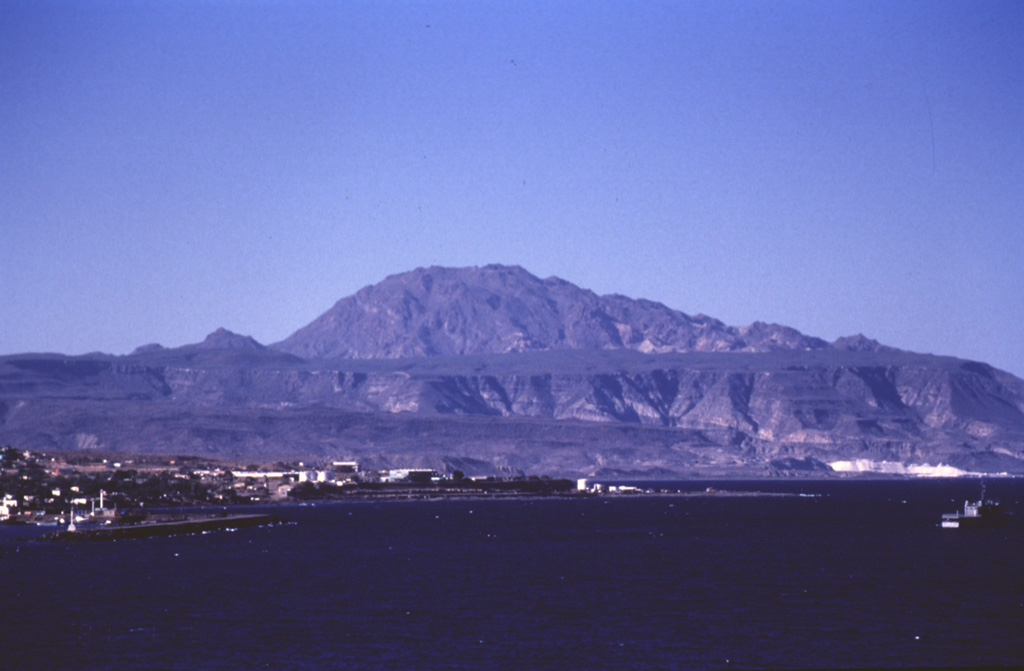Global Volcanism Program | Image GVP-07493

The early Pleistocene La Reforma caldera lies NW of the town of Santa Rosita (left) on the Gulf of California. The roughly 10-km-wide caldera contains a central dome (center horizon) made of resurgent basement rocks. Ignimbrite outflow sheets form flat surfaces and scarps. The age of the caldera was determined by the K-Ar method to be between 1.6 and 1.4 Ma. The eruption of andesitic and dacitic ring-fracture lava domes followed. Andesitic lava flows were erupted on the flanks of the caldera both before and after caldera formation.
Photo by José Macías, 1995 (Universidad Nacional Autónoma de México).
![]() This image is made available under the Creative Commons BY-NC 4.0 license terms.
This image is made available under the Creative Commons BY-NC 4.0 license terms.

La Reforma
